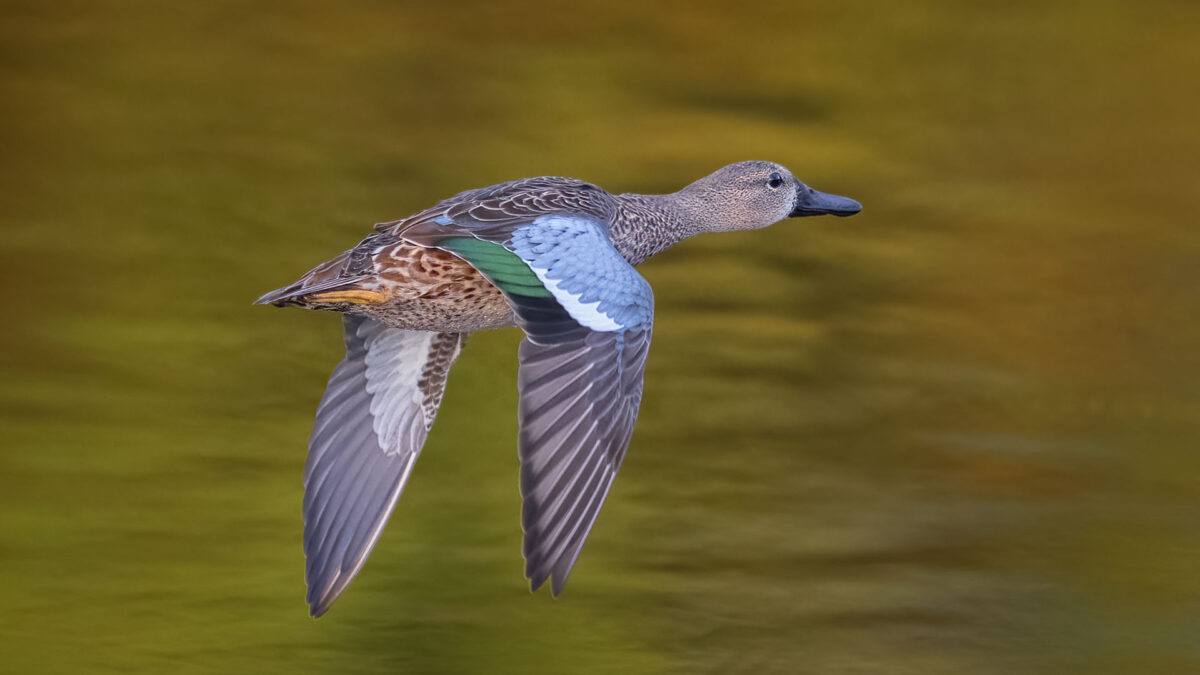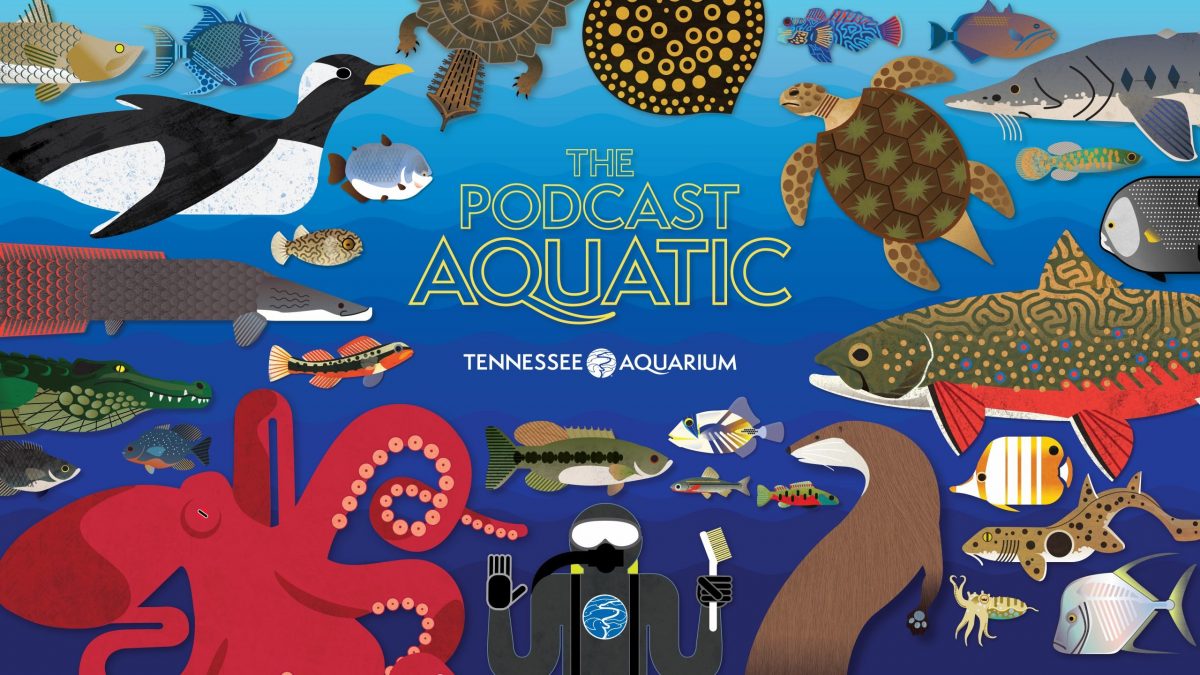If you’ve paid much attention to the Tennessee Aquarium’s social media pages over the last few years, you’ve probably heard us talk a lot about how remarkable the freshwater ecosystems are in our part of the world.
You’ve probably read or heard us use phrases like “underwater rainforest” as we explain how we live in one of the most biodiverse watersheds in North America. We’ve almost certainly mentioned that some of the most incredible and colorful freshwater species in the world live “right in our backyard.”
I should know, because I wrote a lot of those stories. I’m Doug Strickland, and I’m a Communications Content Creator II here at the Aquarium. For almost four years, my job has involved photographing, writing about and creating social media covering the tenacious conservation programs and passionate animal care work we do here at the Aquarium.
When I started in my role, I pointed my camera and recorder at the most obvious places —our exhibits and their residents; our animal care team; our conservation scientists. After six months on the job, I felt like I knew everything about what we did, what we stood for and why our work mattered.
I didn’t know how little I knew, but a then-upcoming addition to the River Journey building was about to show me.
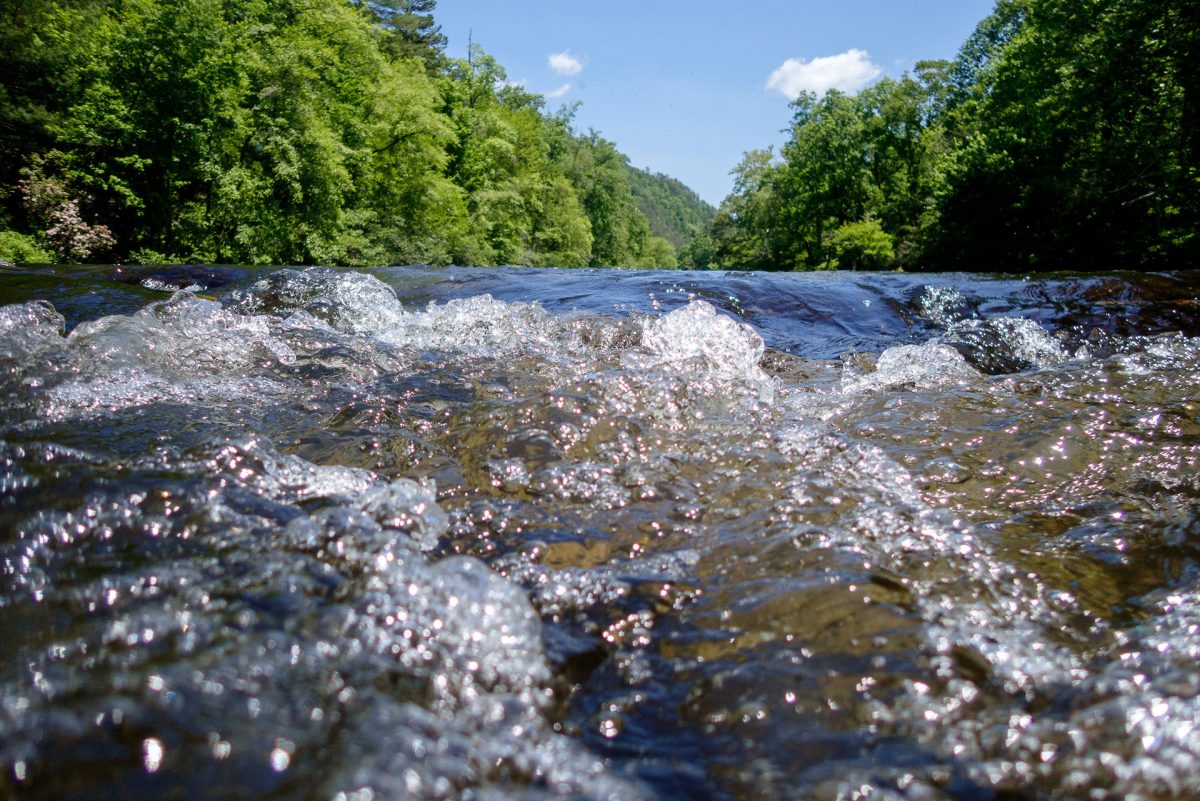
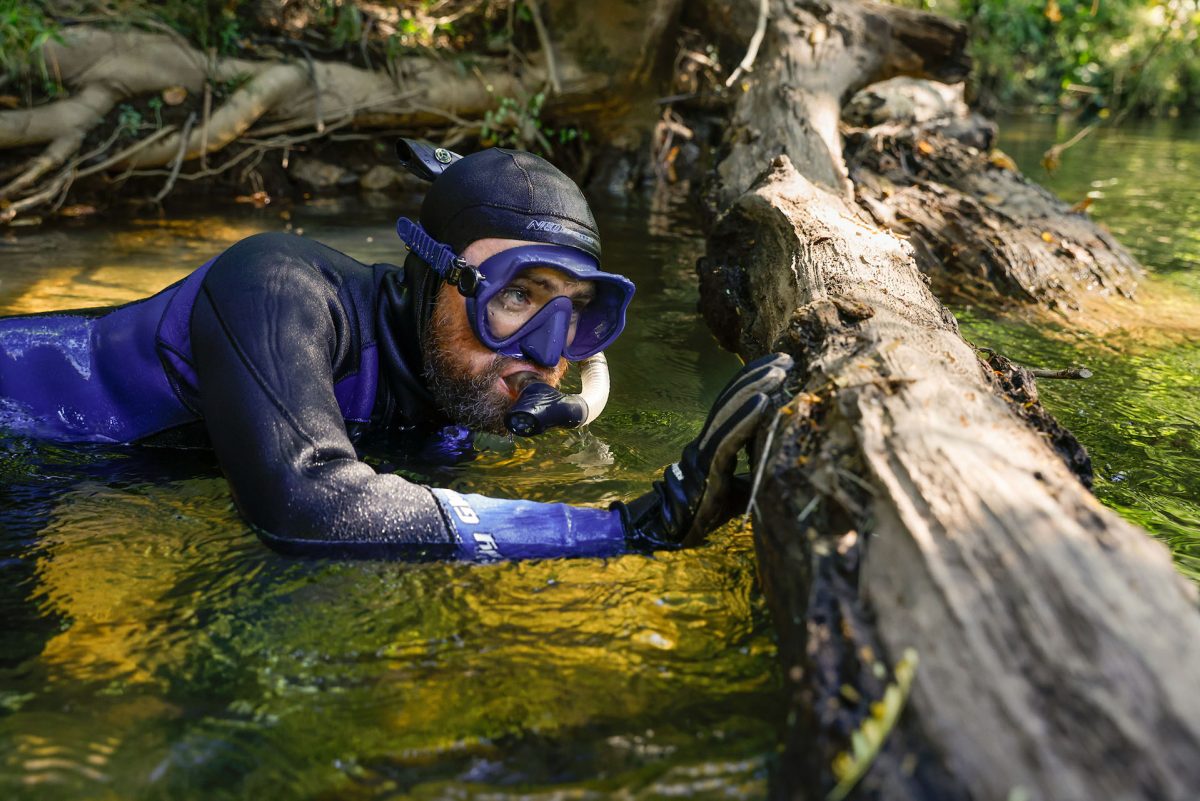
Left: The Tellico River. Right: Senior Aquarist Ben Stenger snorkels in a local river.
Ridges to Rivers opened in 2023, shining a spotlight on the many fascinating — often wildly colorful — species swimming in waterways like the Upper Tennessee River. To help build a connection between the gallery’s exhibits and the real places they were meant to recreate, our team traveled to the Tellico River a year before it opened to capture photos and record video of the same fish species that would be featured.
Clad in a wetsuit and equipped with a mask, snorkel and underwater camera, I dipped into the frigid early-May water expecting to see some “cool fish.”
What we found astonished me.
Senior Aquarist Ben Stenger is one of the Aquarium’s staunchest advocates for exhibiting native species and a longtime snorkeler of local waterways. He was the one who escorted us to the Tellico to see a River Chub nest, over which a massive spawning ball of Saffron Shiners had gathered to lay their eggs.
River Chubs are known as “ecosystem engineers,” and they literally change the landscape of streams through the construction of their nests. Using their mouths, they pick up river stones, carefully stacking them to create mounds of rocks in parts of the river with fast-flowing and highly-oxygenated water.
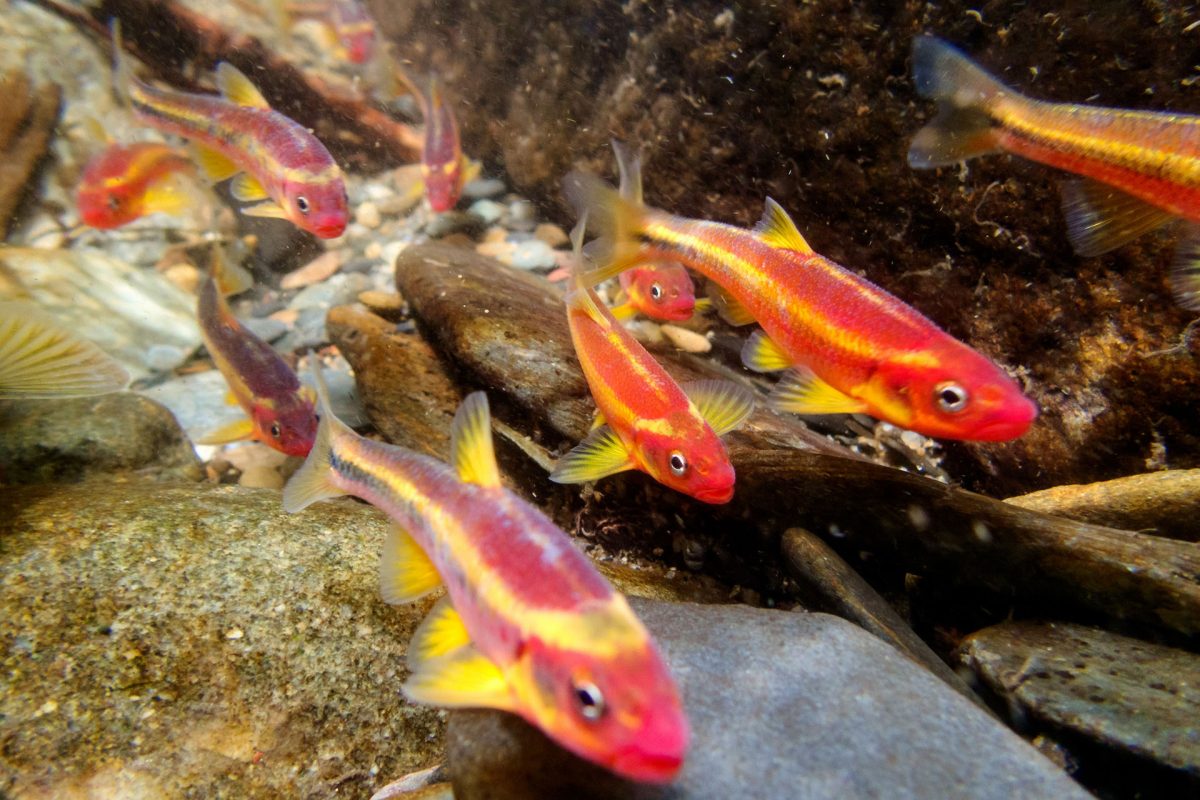
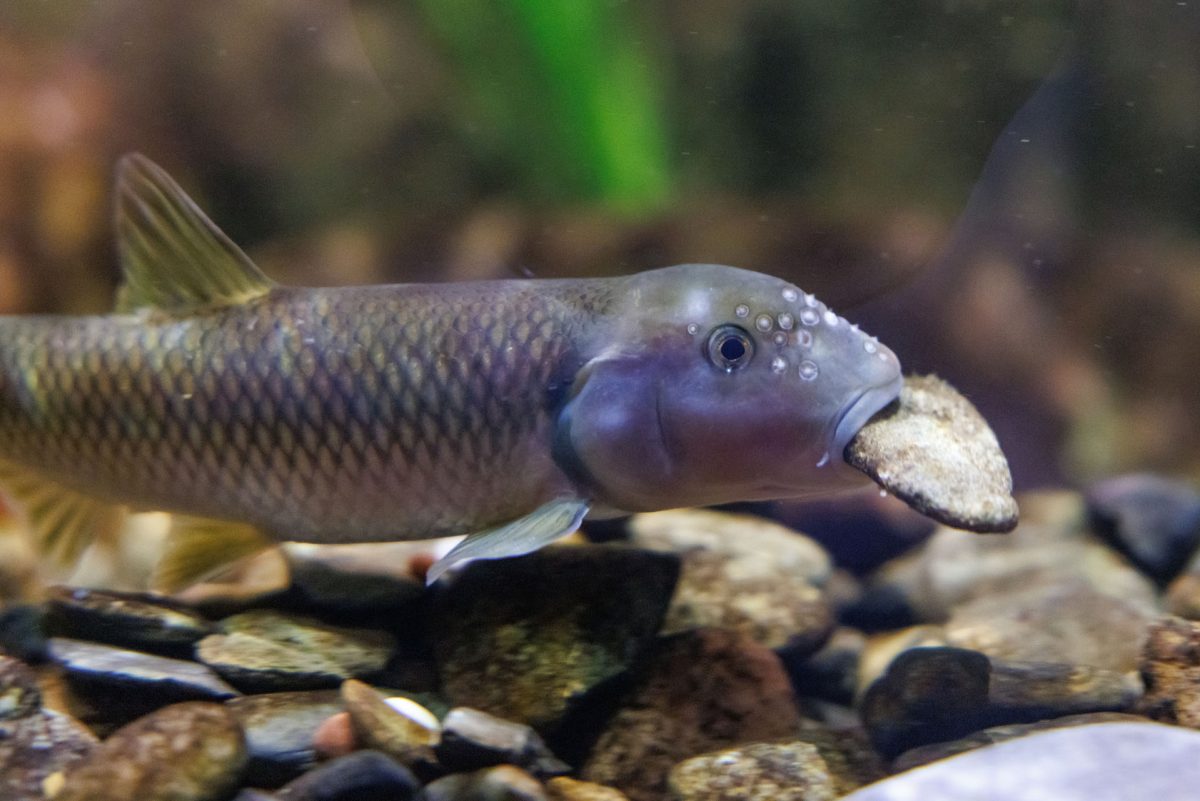
Left: Saffron Shiners. Right: A River Chub carries a rock.
Despite topping out at about a foot in length, a River Chub can build nests up to six feet in diameter, which is large enough to be easily visible from the shore by looking for areas of bright and shiny stones that stand out from the rest of the algae-covered river bottom.
Other smaller species — such as the aforementioned Saffron Shiners — take advantage of the Chub’s hard work by laying their own eggs on these nests where their young can benefit from the shelter and oxygenation they provide.
As I watched the swirling group of brilliant, red-and-yellow shiners gathered atop this nest, I marveled at the River Chubs’ tenacious protection of their territory. When I extended my hand to photograph the nest, a silvery chub with a tubercle-encrusted head charged forward, attempting to beat my camera away.
I grinned so widely that I flooded my mask.
Seeing this behavior from a literal fish-eye perspective was a “wow” moment that changed everything I thought I knew about the rivers and streams I grew up with in East Tennessee. It was the first time in 35 years that I had pulled back the curtain to appreciate the teeming life that is hidden just beneath the water’s surface.
Suddenly, I realized that a group of animals I rarely considered in my daily life was as prevalent around me as the squirrels and chipmunks I saw nearly every day in my neighborhood.
The underwater rainforest wasn’t just an idea anymore; it was right there in front of me.
In the years since, I’ve gone snorkeling a half dozen more times for the Aquarium, and it has never ceased to feel magical. Every time, I ask myself: “How can such an incredible experience be such a well-kept secret?”
Then again, who goes snorkeling in a 3-foot-deep mountain stream?
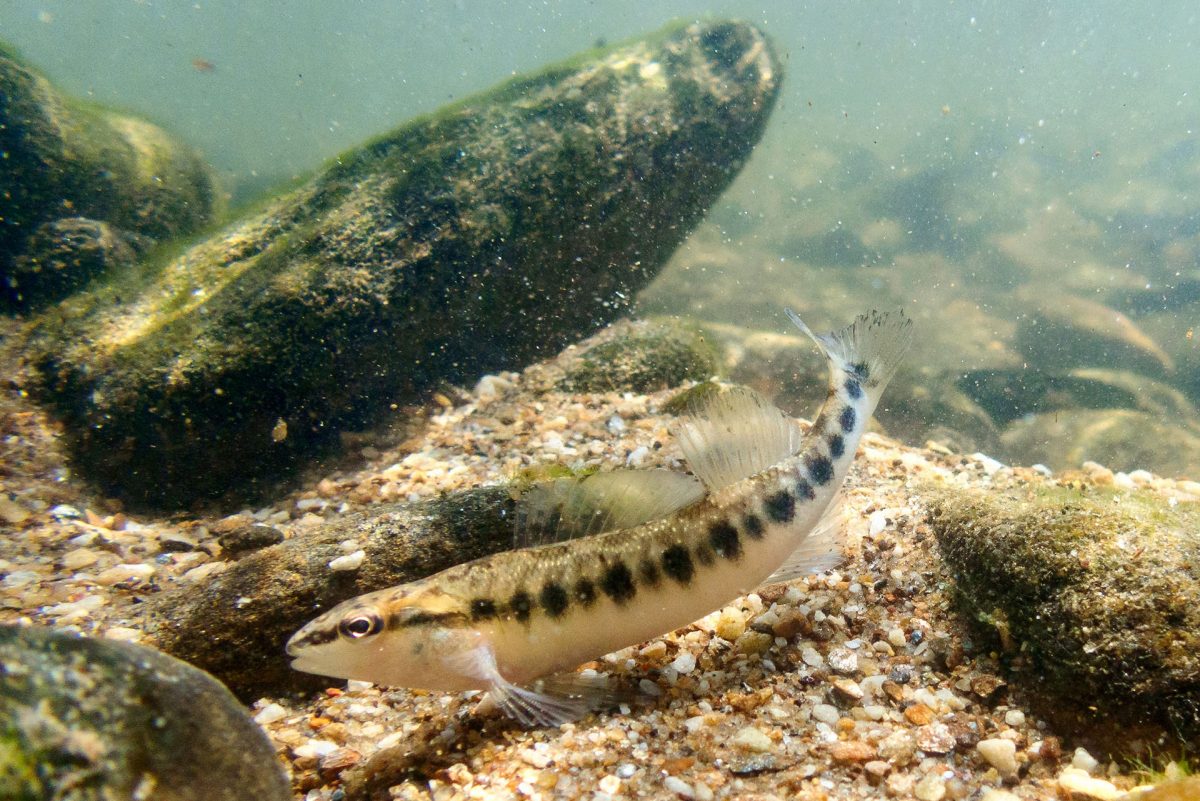
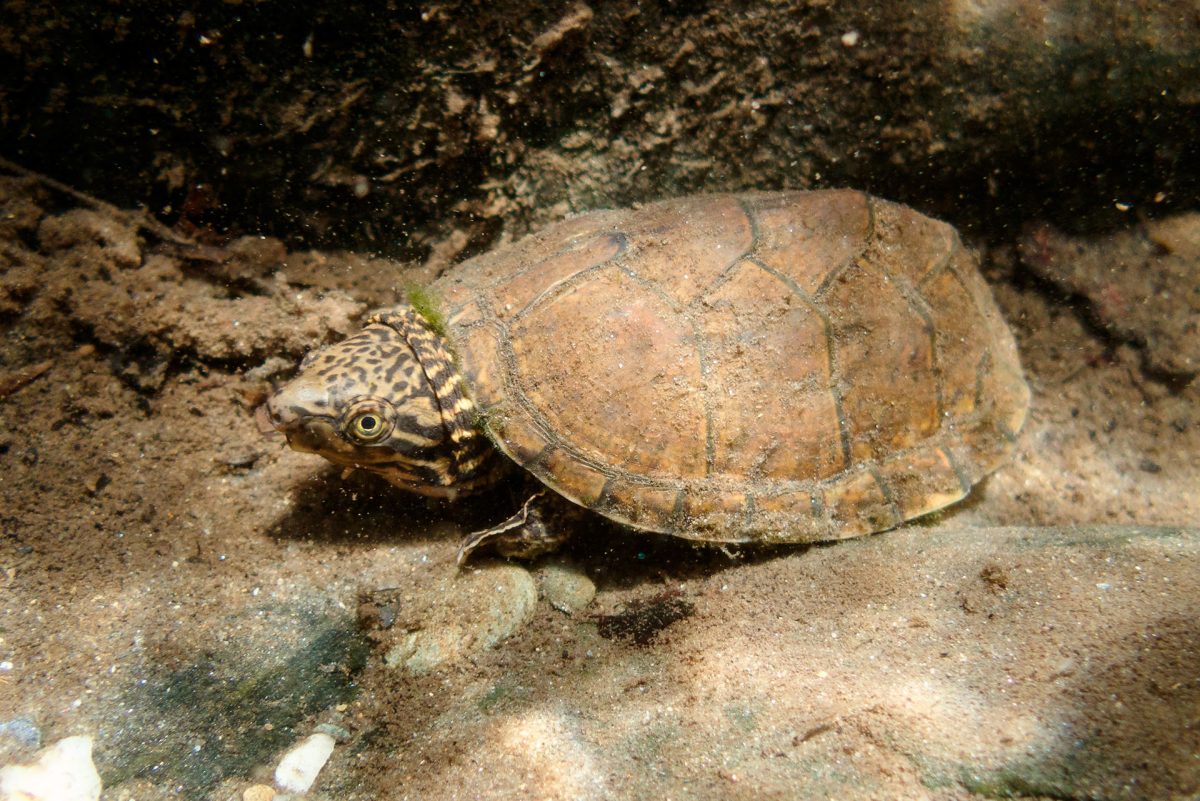
Left: Blackbanded Darter. Right: Musk Turtle.
Everyone knows about snorkeling in the ocean, and coral reefs are justifiably notorious for their abundance of marine life.
As I discovered, however, you don’t have to travel to the coast to appreciate aquatic wonders. If you live in the Southeast — even if you’re landlocked — there’s a good chance they’re right in your backyard! That’s a drum we keep banging away on at the Aquarium, but it’s absolutely true.
I especially believe everyone who proudly calls themselves an Appalachian should — if they’re able — try to experience it for themselves. These wild places are a part of our natural heritage, and their richness is best appreciated first hand.
Fortunately, it doesn’t take much to snorkel in a stream. All you need is a mask, a snorkel (naturally) and a refresher on snorkeling safety. A wetsuit is helpful if the water is still chilly in May, but by July, it’s usually warm enough that you can get by with only a bathing suit and water shoes.
Not all streams will offer the same caliber of snorkeling experience, but the Tellico River and the Conasauga River are both excellent starting points with a wide variety of species and (generally) clear visibility.
As a fervent advocate for freshwater, I can show you photos and videos of these remarkable places and animals. The Aquarium can introduce you to them in our Ridges to Rivers gallery, and we can explain why they’re essential to the health of our waterways.
But I want you to have your own “wow” moment and discover for yourself just how special our underwater rainforest is.
So what are you waiting for? Go stick your face in a stream! (But please, be sure to put on a mask and a snorkel first.)
